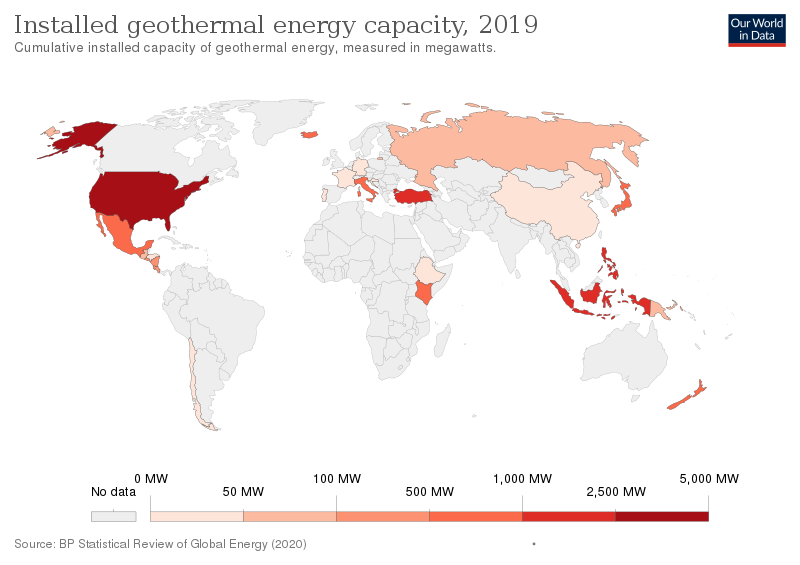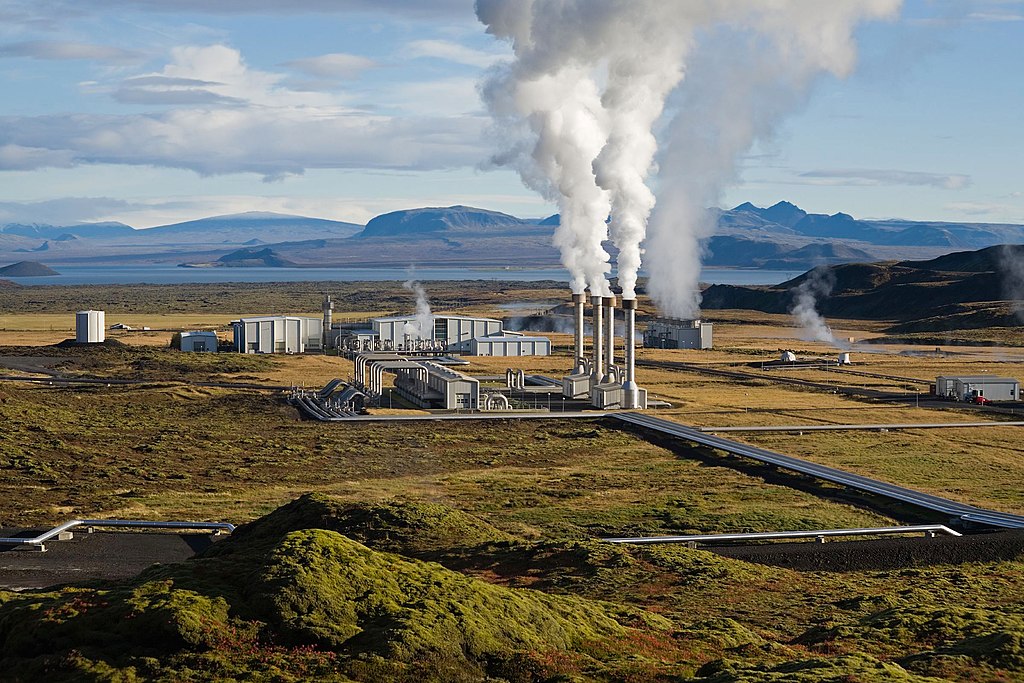Featured image: Steam rising from Nesjavellir Geothermal Power Station in Iceland via Wikimedia commons. Public Domain.
Article: Geothermal energy as a means to decarbonize the energy mix of megacities
Authors: Carlos A. Vargas, Luca Caracciolo, Philip Ball
As the world grapples with climate change, the transition to renewable energy has become a necessity. Governments are investing heavily in solar and wind power to reduce the dependence on fossil fuels. Another non-conventional source of energy that’s still understudied is geothermal energy. But what is geothermal energy? Geo means earth, thermal means heat. The internal heat of Earth is harnessed to heat water and produce power. An advantage of using geothermal energy over solar and wind is that, it doesn’t rely on weather to produce electricity. It provides clean, constant, stable and predictable supply of power. The question is, can geothermal energy cater to the demand of megacities where a large chunk of the world’s population resides?
You would be surprised to know, that geothermal power technology has been around for more than 100 years! The first experimental geothermal power generator was constructed in 1904 by Prince Conti, an Italian aristocrat. Iceland was one the first countries to implement this technology on a larger scale. Until 1970, Iceland used conventional coal and gas to produce power. Today, 40% of the electricity in Iceland is sourced from geothermal energy.
Such a reliable source of energy should be suitable for powering megacities which are critical for global economies. Vargas et al. conducted a study on three megacities: Los Angeles (USA), Bogota (Columbia) and Jakarta (Indonesia) to reveal their potential of producing power from geothermal energy.
With population exploding, urbanization increasing, energy consumption is expected to rise multi-fold. Though megacities are doubling down on investment in solar and wind power; these sources have limitations in urban settings. According to the authors, geothermal energy is a viable option to meet the needs of megacities. The results of this study were quite promising. According to the report, the Los Angeles basin has a capacity of 312,138.8 GWh which is 4 times the current consumption. Jakarta has a potential of 20,145.1 GWh (twice the current consumption). Lastly, Bogota has geothermal reservoirs which could produce 16,603 GWh energy which is 1.5 times the current usage. These figures are not at all surprising because, the energy reserves in the upper 10km of earth’s crust are approximately 1.3 × 1027 J, which could supply the global energy use for approximately 217 million years!

Geology is the main factor that decides the accessibility of geothermal reservoirs. Geothermal energy is easily harnessed at locations near plate boundaries, where tectonics enables heat to flow to shallower depths where it heats water and creates natural geothermal reservoirs. Los Angeles, Bogota and Jakarta fall under this category. But how do you get it to work in places like New York where such conditions are not easily available? Technologies like Advanced Geothermal system (AGS) and Enhanced Geothermal system (EGS) were developed to tap hot rock reservoirs at greater depths. These methods involve the controversial process of fracking where a network of fractures is artificially created in hot rocks by injecting pressurized fluids. Many countries are hesitant to use these technologies due to risk of induced seismicity.
The high installation and drilling cost (10 million US dollars) makes geothermal energy unattractive to investors, but things are steadily changing. Many start-ups in the geothermal space are looking at drilling and exploration methods employed by the oil and gas industry to scale down the cost. As the prospects for oil and gas in the energy sector reduce, oil and gas giants themselves are diverting capital and their expertise in drilling to the geothermal sector.
Even though research and development is catching pace, there are many hurdles ahead. The majority of megacities are located in developing countries which may not have the capacity to invest in this technology yet. Unless and until the cost of installation as well as drilling becomes affordable and technology is advanced enough to tap deeper geothermal reservoirs, geothermal energy for megacities will have to wait.
Is geothermal energy fit for megacities? by Amber Saraf is licensed under a Creative Commons Attribution-ShareAlike 4.0 International License.

